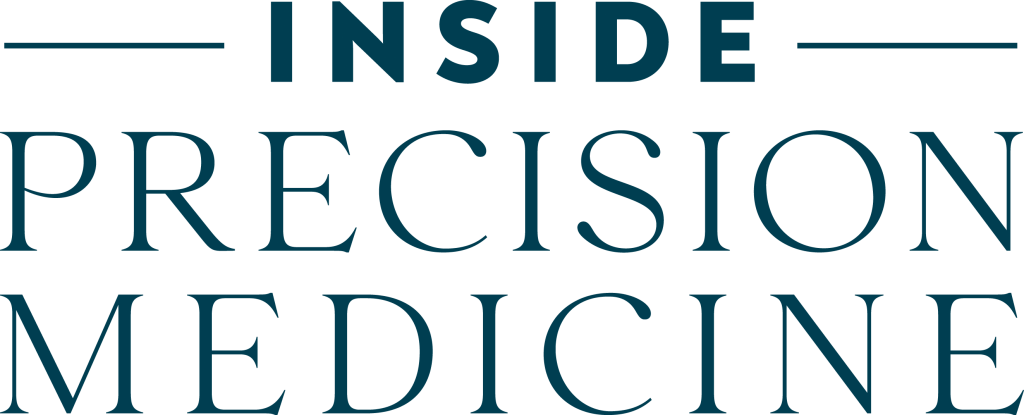Inside Precision Medicine editor in chief Damian Doherty recently sat down with two leading experts, Thomas Sakmar, MD, of Rockefeller University, a pioneer in G protein–coupled receptor (GPCR) research and chemical biology, and Jochen Schwenk, PhD, of SciLifeLab in Sweden and the Human Protein Atlas, a pioneer in proteomics and multiplexed immunoassays. They recently published a paper titled Multiplexed mapping of the interactome of GPCRs with receptor activity–modifying proteins in Science Advances.
The study delves into receptor activity–modifying proteins (RAMPs) and their interaction with GPCRs, with potential implications for drug discovery and diagnostics.
In this interview, they share insights on leveraging multi-omics approaches, including molecular methods like MolBoolean and antibody validation, and addressing the challenges of translating basic scientific discoveries into clinical applications.
Q: How essential is the integration of multiple omics approaches to achieving a deeper understanding of disease mechanisms?

Jochen Schwenk: We are in a time where a single type of data or information is often not sufficient to learn about human biology. Interactions between different molecular classes are complex and driven by how the underlying genetic variation influences the functionality of processes.
GPCRs are one window to human biology, showing us regulatory aspects of the underlying mechanisms. In our approach, we decided to go with the canonical sequences to provide a baseline information set. So, we haven’t studied how variation would affect our approach yet because their combinations will generate a very large set of samples. It will now be quite exciting to see how other techniques will add insights to what we have started. Look at sequence variation in terms of interaction, sequence variation in terms of ligand binding, and probably also using orthogonal methods like mass spectrometry to look at structural elements of sequence variation in the GPCRs.
Thomas Sakmar: It occurs to me that we often talk about binding reactions in chemistry. There are two elements, right? You get a substrate-enzyme complex, for example, and you try to reduce everything to two elements.

But of course, we’re talking about complex interactomes here. And so you need multiplex methods to try to sort all of that out.
It brings to mind that, in the GPCR space, there are receptors in the body that are still a mystery. The genes are there, they’re expressed in a tissue-specific way, they’re on cell membranes, but we don’t know what the molecule is that actually activates those receptors. Those are called orphans—orphan receptors—because we still don’t know what the natural ligand is for those.
One of the possibilities is that the receptor itself needs to have another protein to form a complex to be competent to bind its natural ligand. This is an opportunity to test that hypothesis for deorphanization programs, which are very important for drug discovery.
And then, if you find a putative receptor-RAMP complex that now becomes the active receptor for a new ligand, you can validate that with some of the other technologies. For example, MolBoolean, which allows you to definitively show that the complex exists and could be competent to act as the actual receptor for a new drug entity.
These omics methods are important. Protein-protein interactions are important. Defining them in time is important. And there are a lot of subtleties to it, as Jochen suggested, because of sequence variations, post-translational modifications, and so forth that could be interrogated in these methods.
Schwenk: It’s interesting to just think that we learn a lot about this proteoform space, which of course expands beyond the 20,000 canonical protein-encoding genes that we have now as a reference.
I think we touched upon this a little bit in our study, that even if you know about the co-expression on the RNA level, the coexistence of two receptors in the same cells and tissues doesn’t always mean that the two actually bind, right?
So, it’s not only looking for the positive hits and building a library on those, but also reconsidering that, despite co-expression, maybe there is no interaction on the protein level.
We can then expand this to different tissue types and look at it on a molecular or cellular level using other methods like MolBoolean. Can we confirm our screening observations? Can we support or challenge our hypothesis?
I think that’s quite an interesting direction to think about.
Q: Do you feel we may have spent too much time down the proteogenomic rabbit hole and that “proteoformics” is where we should be focusing our efforts?
Schwenk: My interpretation of that question is that nowadays, there’s a lot of focus on studying circulating proteins in relation to genetic variation on a population level. That field has received quite some attention, and important discoveries have been and will continue to be made.
But the real question is: What is the next step? Where do we take these discoveries? I think we need to reconsider how classical cellular systems, for example, can support these hypotheses and demonstrate the effects of genetic variation on the proteome on a one-by-one basis.
Here, I see a growing interest in building large libraries of fewer receptors—ones that might have point mutations or other combinations of conditions that could influence interactions and each other. This also connects to drug screening. I think the focus is shifting—moving from a broad scope to a more refined, individual level with a global effect.
Sakmar: What also comes to mind when you discuss proteoforms is that we’re in an age where we can computationally predict protein folding and structure. It’s really interesting that there are many conformational variants of the same amino acid sequence, for example, in amyloid diseases. You have proteins that have a normal function, but they can misfold.
The sequence doesn’t change, but they misfold or they fold aberrantly so that you get pathological forms of a protein that is technically the correct sequence. It’s not a mutant, it’s just folded incorrectly. It’s an environmental effect.
We have to find ways to be able to look at these morphotypes of pathological misfolded proteins and be able to detect them and correlate those kinds of morphogens with disease processes—and I think this is a very new technology that’s coming out now.
Schwenk: It’s interesting you mention computational approaches for predicting structures. You might recall that in our antibody validation paper, we collaborated with Arne Elofsson, PhD, here at SciLifeLab. He works a lot on structural prediction, and we saw that the antibody binding pattern we identified matched very well with the predictions.

We could also demonstrate that factors like epitope length and the degree of disorder influenced antibody recognition.
But when we tried to apply these models to the interaction between the RAMPs and the GPCRs, which occur in the membrane, the current models didn’t perform as well. We had experimental evidence, but the predictions weren’t clear enough to support it. I think our dataset can now, in return, contribute to improving these models by providing high-quality data for better performance.
Sakmar: Exactly. And of course, the long-term perspective here involves finding ways to control some of these pathways that we’re discovering in disease states. I think there’s a lot of potential for future work.
Schwenk: Yes, and maybe one thing to add that comes to mind: all these prediction and language models rely on good-quality data to improve their performance. I think that’s what we—and hopefully others—want to deliver: a high-quality dataset. With this kind of data, you can begin to train models, learn from them, and then implement them into structural predictions and wet lab experiments that help answer even more questions.
Q: What are the challenges in translating basic science to practical applications?
Sakmar: Well, translating basic science into the clinic is not easy, especially in the drug discovery space where it takes years or even decades to develop a new drug. But what we’re trying to do with our projects is not developing a new drug per se—it’s about developing a platform technology and disseminating data that can be used to rethink how drugs could be developed.
In fact, I think some of the most immediate effects of what we’re doing may be on the diagnostic side. It turns out that the techniques we’re developing to look at interactions between antibodies and receptors—to detect these complex formations—can also be used to identify abnormal antibodies against those same receptors that occur in disease states.
Autoimmune diseases, for example, create conditions in which some people develop autoantibodies against self—their own receptors, their own proteins. Some of the technologies we’re developing could be used to detect those types of conditions.
That would be very useful in clinical practice, to have an inexpensive, multiplex method. Right now, if you want to see if a patient has a particular autoimmune antibody, there might be a test available, or there might not be. It could be expensive, or it might not be covered by insurance payers in the United States or by health systems in European countries.
But if we could develop a very small, miniaturized test—one that just requires a blood spot on a piece of paper that you can even send through the mail—that would be fantastic.
And I think Jochen has used that technology to collect samples for his basic science work. But that same technology can also be used for diagnostics in the clinic. That’s where I’d like to see it go.
Schwenk: It’s sometimes about matchmaking, right? If you have a specific phenotype and there are indications that GPCRs could be involved, then of course the route towards translational implementation might be shorter.
We still know too little about the broad-scale, normal effects of GPCR autoreactivity. I think with these techniques that we have now established, we can actually do screening—looking at the general population to ask: is this an effect of a specific disease, or are there other underlying conditions that maybe connect diseases?
That will be an amazing learning exercise. It really allows us to go beyond just looking at one protein and one interaction. Instead, we look at the complex, and how that complex—because it hopefully resembles true biology more closely—will allow us to develop more advanced methods.
I’m pretty confident that we’ll find these matches. We’ll find some areas where we can learn, where we can cross-connect with different diseases. And then, we’ll also need a bit of luck to take those next steps. But it will definitely be exciting.
Damian Doherty has been in media and publishing for nearly 30 years, beginning in the early nineties at News Corporation. Damian has managed, edited, and launched life science titles in drug discovery and precision medicine. He was features editor of Drug Discovery World for fourteen years and founded, established, and edited the Journal of Precision Medicine in 2014. In parallel, Damian founded and organized the Precision Medicine Leaders’ Summit, a global, immersive 3-day senior leadership conference that still runs today. He edited AIMed magazine in 2019 before launching Photo51Media, a platform for illuminating untold, compelling stories in precision healthcare. Damian joined Mary Ann Liebert in 2021 to help steer the new rebrand and relaunch of Clinical OMICS to Inside Precision Medicine.
















